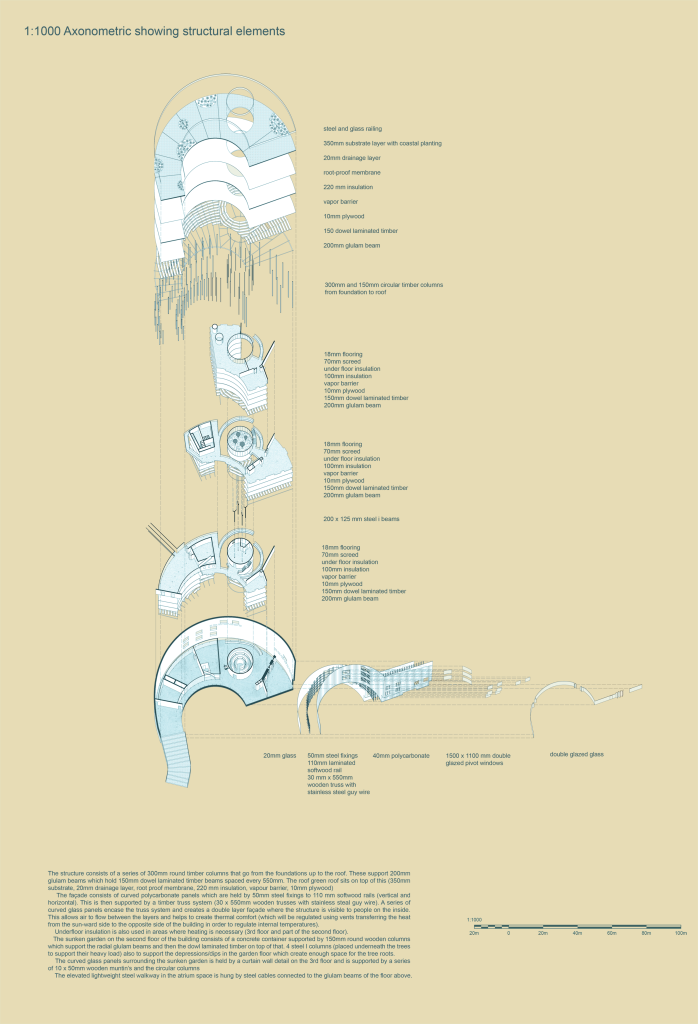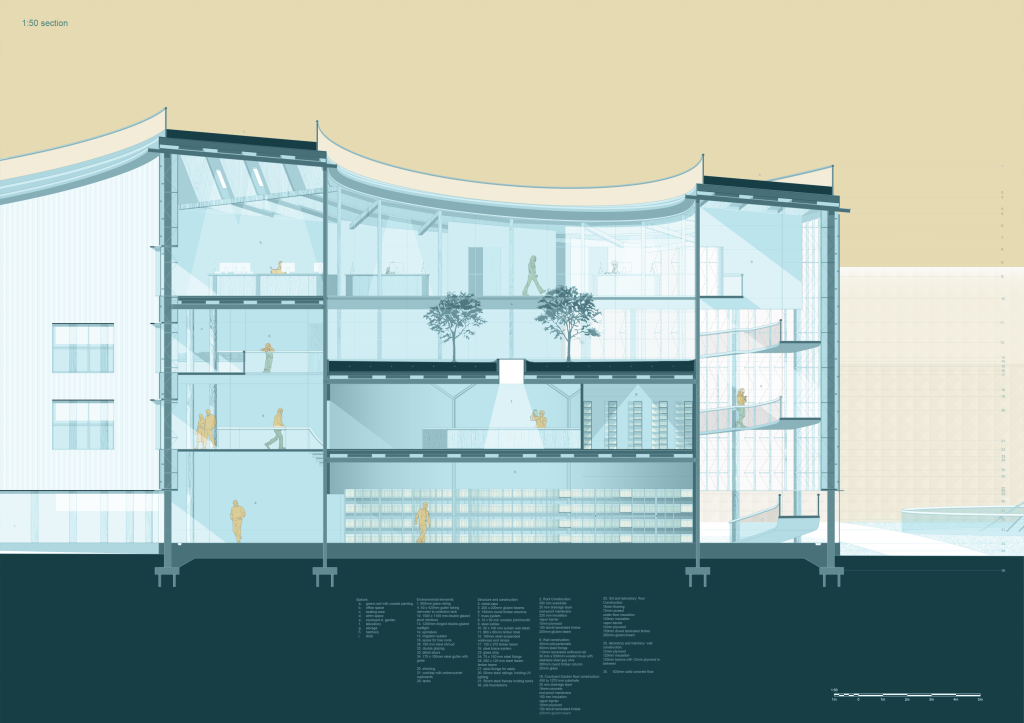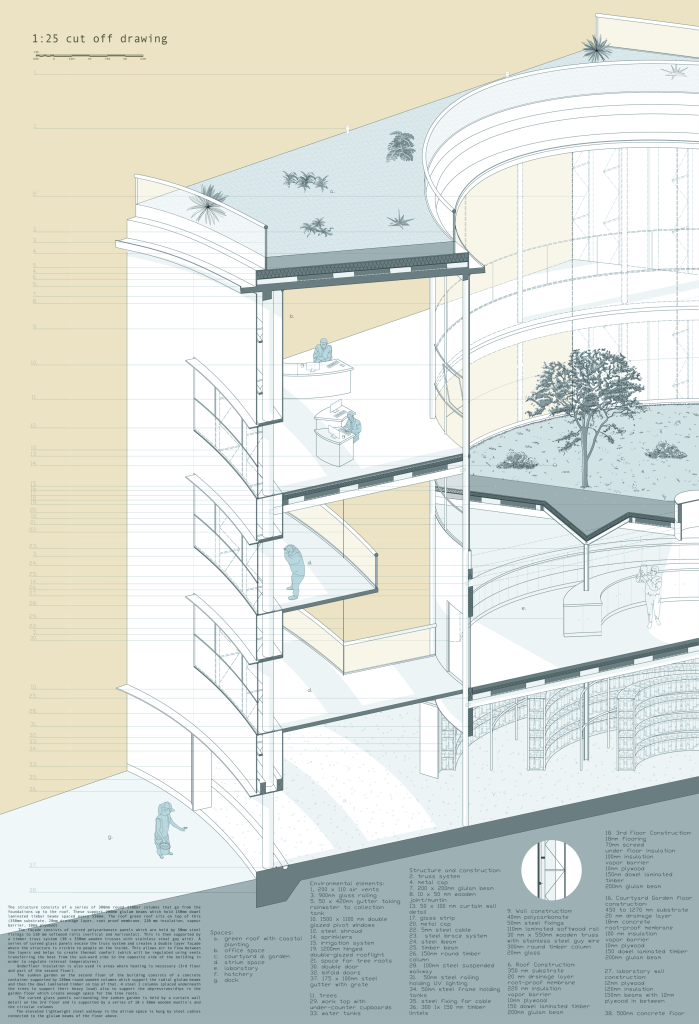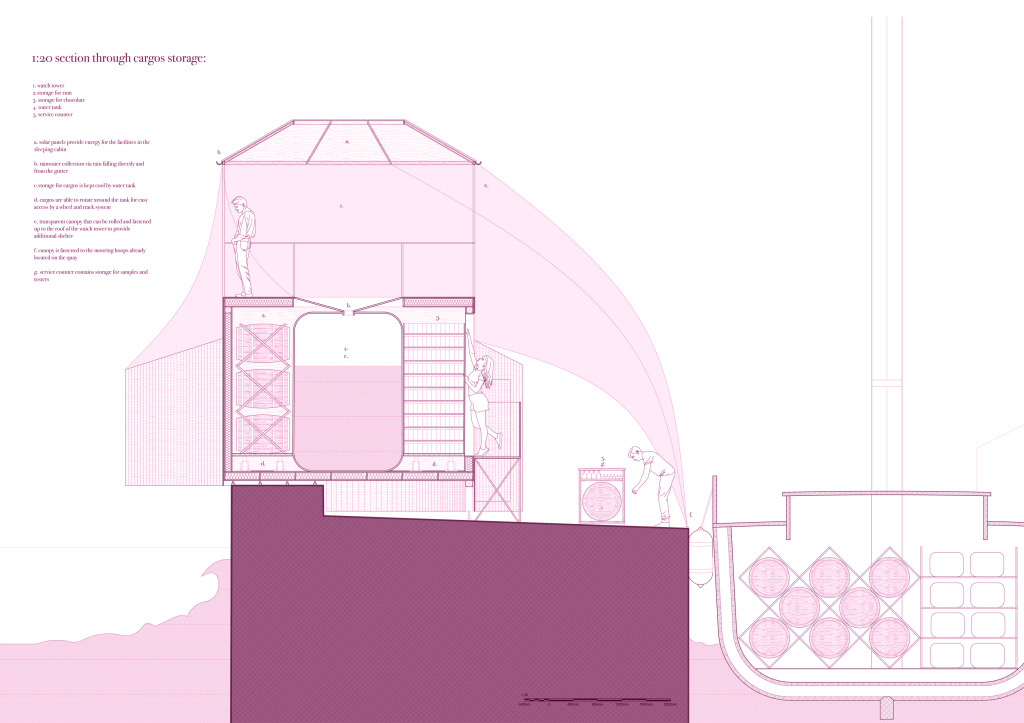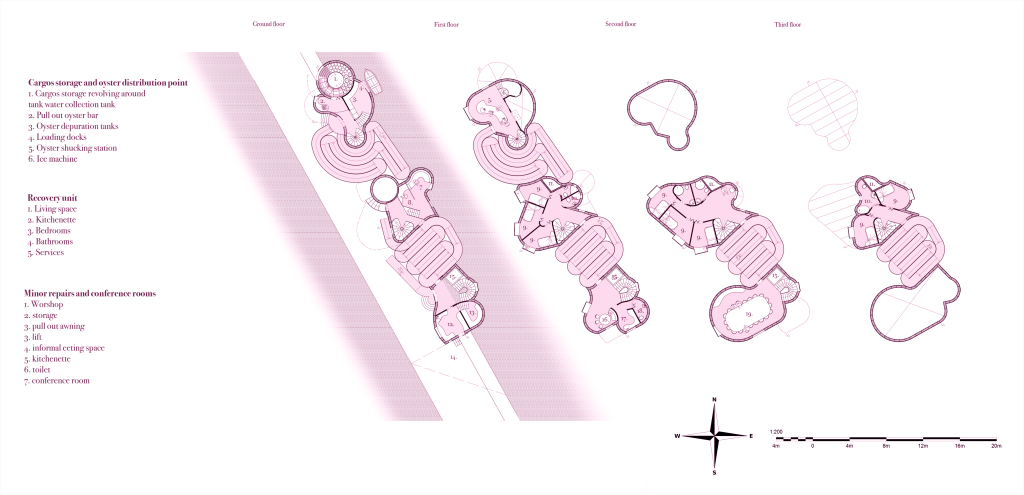Isabella Lunn
Missing
Seaweed is a natural product with incredible properties that is starting to be utilised increasingly in today’s climate; with local offshore farms beginning to sprout up in Cornwall, the Par Horticultural Seaweed Centre is both a processing plant for horticultural seaweed products and a community space for locals and tourists alike. While distributing these amazing products across the country it was also important to ensure that the project also gave back to the community, with spaces for events, a beautiful garden to enjoy and tourist attractions to experience; bringing people together in Cornwall and providing a new route for income in one of the most impoverished counties in England. Each “wing” of the dock represents the two areas of both ‘production’ and ‘community,’ combining in their use and processing of seaweed.
Notpla has the potential to revolutionise the plastic industry through their creation of biodegradable, edible pods and packaging which reduce the need for harmful plastics. The site in Par, Cornwall will be home to farming and processing of the seaweed, and the production of Notpla, which will be sold to people and events in the surrounding area. As this protect is new, machinery has only been made to cater a small scale, however they are making efforts to scale their machinery in order to cater for an industrial sized production.
The structure will allow visitors to witness the different processes. The form acts as an extension of the landscape, its accessible green roof provides a viewing platform where visitors can look out over the sea and observe the kelp being farmed in the distance. The slope allows for tiered seating and creates a flexible space ideal for events and performances.
The polycarbonate facade demonstrates responsible use of plastics, illuminating the importance of considering the end of life of plastics. This double facade regulates heat in an environmentally friendly way whilst retaining a level of translucency and allowing the sun to gently illuminate the interior. The interior spaces and floors are kept separate from the facade, creating interesting, narrow spaces with high ceiling heights lined by rows of columns.
A mixture of green planting (trees and soil) and coastal planting (sand and shrubs) represent the connection between land and water. The atrium space remains the focus, and on top of the hatchery and lab space lies a a sunken garden, which brings nature into the heart of the building. This is much like Notpla which aims to draw a natural resource into the core of an unnatural problem.
The ground floor will host the initial farming and messy processes of the seaweed, and the top floor will contain the clean office spaces, this allows only the upper floors to be heated and insulated
Email: isabellalunn@gmail.com
Linkedin: https://www.linkedin.com/in/isabella-lunn-970b60220
Missing
Introduced in the heart of Reading Town, Hogmanay, the Scottish celebration of New Years, brings a large infusion of culture and festivity to the local area. Cock-a-Leekie soup, being an integral cuisine of the Scottish, accompanies the festivities. The influx of Hogmanay culture, introduced by the arrival of the Soup Facility, will indulge Reading in a host of traditions that seek to bring people together to celebrate the New Year and the fresh start that follows midnight. On New Year’s Eve in Reading, the public are invited to join in the activities, including; farming the ingredients for the soup, trying the soup, setting Juniper branches alight at midnight, Ceilidh dancing, drinking homemade Gin, and the chance to watch as the chefs produce the soup from raw ingredients on site.
Cock a Leekie , Scotland, Timber, Homemade, Feathers, New years
Part 1
A mini-distribution point for our chosen cargos: rum, chocolate, lager and chocolate Inspired by waves which can be constructive or deconstructive. This proposal can be both built and taken apart and the premise can also considered constructive in the way that it deposits cargos onto the quay. The canopy that stretched the whole site emulates a wave breaking over the site paying homage to the sites (a quay in Lyme Regis, Dorset) history of being swept away and its tent like nature also suggests a market-like atmosphere where the public can marvel at the exotic goods being sold.
There is also the idea of tactility as to promote more intimate awareness and engagement with the chosen cargos, this is done through the rotation of cargos around the water tank.
Part 2
Leading on from the proposal in part 1 where the distribution point has expanded, the idea of intimacy is translated into the physical walls of the proposal by having a small intimate spaces where they can be more easily experienced bodily. The concept of the wave is translated into the form and layout of the building.
The next phase will add oysters to its cargos due to their sustainability and the large oyster farm which is located nearby.


